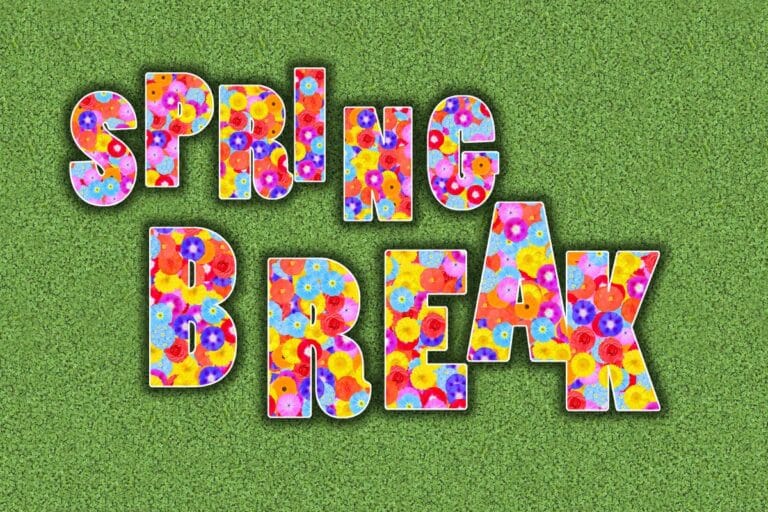Getting students motivated after spring break can feel a bit like trying to run in flip-flops. They’ve tasted freedom, the sun’s shining a little brighter, and their minds are still halfway in vacation mode. Suddenly asking them to snap back into full academic gear? Easier said than done.
But the good news? It’s totally possible to re-energize your classroom and get everyone back on track without feeling like you’re dragging them through the rest of the year. The final months of school can still be meaningful and productive, you just need a little strategy, a lot of consistency, and a few fresh ideas. Here’s how to help your students bounce back and finish strong.
Stick to a Steady Routine
After a break, consistency is everything. Kids thrive on structure, even if they pretend to hate it. When students know what to expect, they feel secure, and that security helps them re-engage. Now isn’t the time to loosen up the routine just because summer is peeking around the corner.
Stick to your regular schedule as much as possible. Keep transitions smooth, revisit classroom expectations, and follow through with routines. Simple things like greeting students at the door, starting each day with a warm-up, or ending class with a reflection can ground students and help them shift back into learning mode.
Also, don’t underestimate the power of good sleep, balanced meals, and regular physical activity. Encourage healthy habits during your lessons when possible. Kids who feel good physically are more likely to stay focused and energized in class.
Reignite Interest with Short-Term Goals
When students come back from break, the end of the year can either feel like a slow crawl or a final sprint. Setting short-term goals can help them focus on what’s right in front of them instead of counting down the days.
At the start of the week, invite your students to set one small, specific goal. Maybe it’s reading two chapters of a book, completing all homework on time, or improving their test score by a few points. Keep the goals personal and achievable. Once they accomplish that first goal, celebrate it! Even a quick shout-out, a sticker for the little ones, or a high-five can go a long way. Then, challenge them to set a slightly bigger goal. Building this momentum helps students feel capable and proud, which fuels motivation better than any reward ever could.
Make Lessons Feel Fresh Again
After a relaxing break, students don’t want to walk into the same old routine. That doesn’t mean you need to overhaul your curriculum, but it might be time to breathe a little life back into it. Think about what made the beginning of the year exciting: interactive activities, group work, hands-on projects, and maybe a little bit of classroom decorating. Revisit your go-to icebreakers or switch up your bulletin boards with student-generated content. Add in some choice-based assignments or project-based learning to spark creativity.
Movement helps too – use partner activities, gallery walks, or even scavenger hunts to get kids up and out of their seats. Engagement is everything right now, and even small changes can help recapture your students’ attention for the rest of the school year.
Give Them Something to Look Forward To
One surefire way to motivate students is to dangle a little excitement in front of them. And no, it doesn’t have to be over-the-top or expensive. Just something they can look forward to, something that feels like a reward for their hard work. Weekly incentives work well. You could try a class goal system where students earn letters for a word like “COMPLIMENT” when they show kindness or cooperation. Once the full word is earned, they get a class privilege—maybe a homework pass, movie day, or even a game afternoon.
You could also start planning a big end-of-year event and get your students involved. Field days, talent shows, or themed classroom celebrations are all great motivators. The earlier you start planning, the longer the excitement lasts, and students will be more likely to stay on task if they know they’re working toward something fun.
Do Something That Matters
Spring is a perfect time to focus on community and connection. When kids feel like their actions matter, they’re more likely to show up with purpose. So, why not find a way to give back? You might plan a classroom service project like making care packages, organizing a donation drive, or writing letters to residents at a local senior center. Or maybe your class can partner with a younger grade and become reading buddies. Even something as simple as cleaning up the school grounds can help students feel proud of their impact.
Helping others builds empathy, but it also boosts morale, especially at a time of year when energy is running low. These kinds of experiences leave a lasting impression and can bring a new sense of focus to your classroom.
Take Learning Outside
When the sun is finally out and the air smells like fresh grass, no one wants to be stuck inside all day, and that includes you! Take advantage of the nice weather and bring learning outside whenever you can. Even a short activity like a nature walk or silent reading time on the playground can recharge your students. For a writing lesson, students can sit under a tree and describe what they see, hear, and feel. Science lessons can come to life with observation journals or plant studies right on school grounds. When kids are given the freedom to learn in different environments, their engagement increases naturally. Plus, it’s a great way to give their brains and bodies a break without sacrificing instructional time.
Check-In—And Really Listen
Sometimes, motivation issues aren’t about laziness, they’re about emotions. Spring can bring up a lot of feelings for students. Some are worried about moving up a grade, leaving favorite teachers, or even heading into summer without the structure they’ve grown used to.
Make space for check-ins. That could mean a quick daily journal, a feelings chart, or just a few minutes to talk during morning meetings. Show students that how they feel matters just as much as what they do in school. When students feel seen and supported, their motivation naturally improves. They’re more likely to put in the effort when they know someone’s cheering them on.
Re-motivating students after spring break isn’t always smooth sailing. But it doesn’t have to feel impossible either. With a little planning, a dash of creativity, and a whole lot of consistency, you can help your students cross that finish line feeling strong and proud of how far they’ve come.




